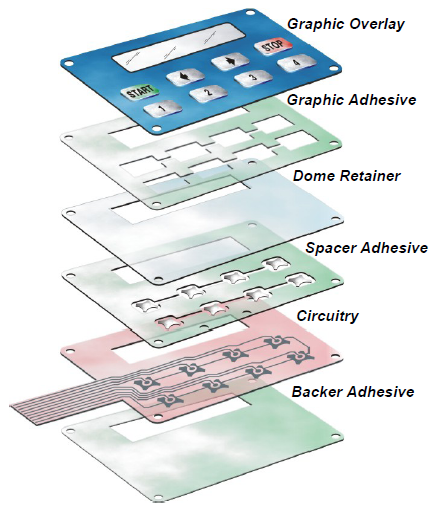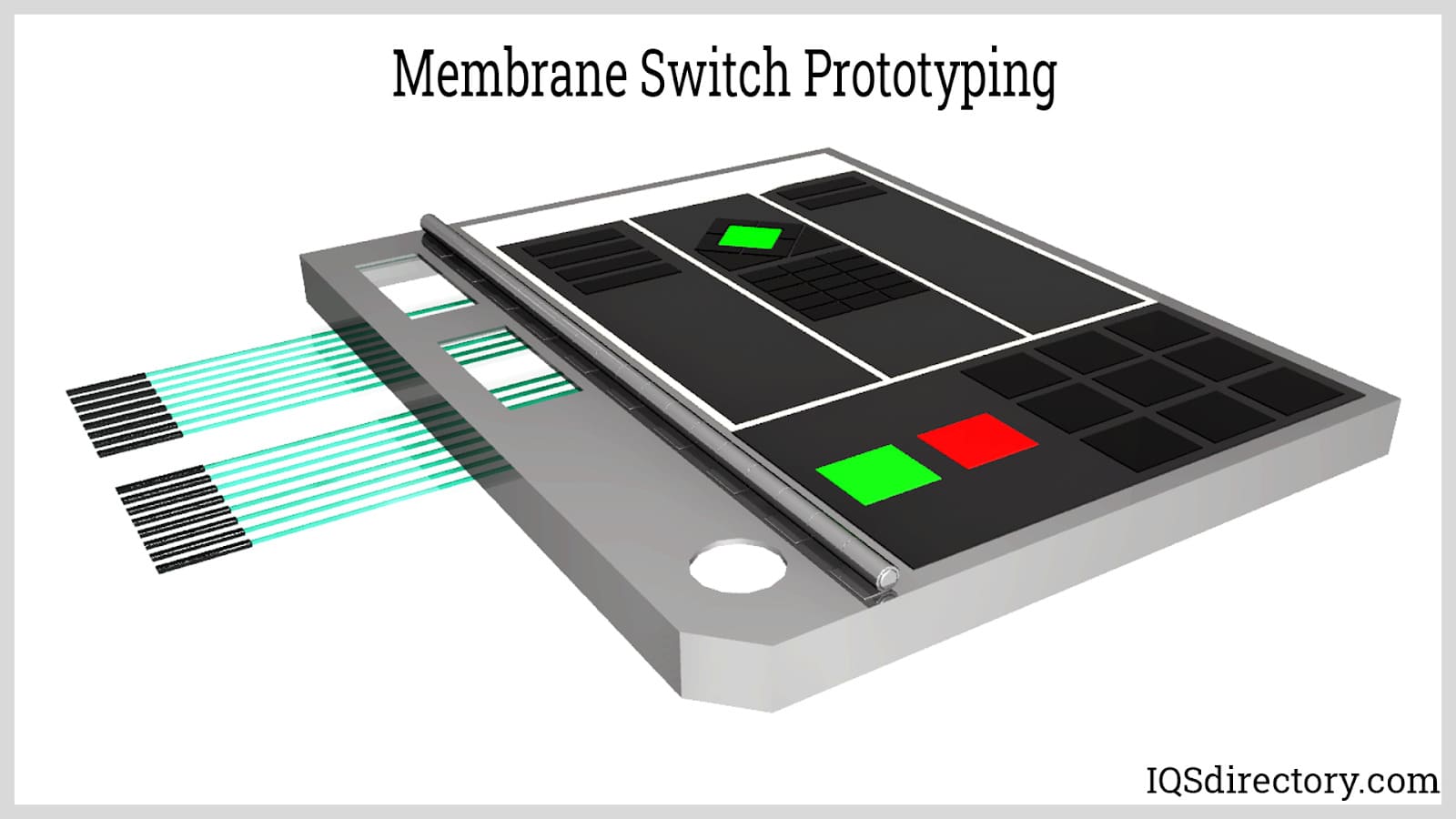How Membrane Switches Are Revolutionizing User Interface Design
How Membrane Switches Are Revolutionizing User Interface Design
Blog Article
Recognizing the Significance of Membrane Switches in Interface
Membrane buttons are integral parts in the style of reliable interface, facilitating not just functionality yet also boosting aesthetic allure and user communication. Their distinct attributes, such as resistance to customizable styles and environmental aspects, make them suitable for a varied array of applications throughout numerous markets. As we discover the future patterns and numerous advantages connected with Membrane technology, it ends up being clear that these switches are greater than simply components; they represent a merging of innovation and functionality. The effects of this technology on individual experience deserve examining even more.
What Are Membrane Buttons?

The spacer layer, which contains glue properties, permits for the splitting up of the circuit layer from the overlay, ensuring that the switch continues to be in a non-activated state until pushed. When pressure is related to the overlay, it presses the spacer layer, connecting the gap and finishing the circuit in the underlying layer. This style not only reduces the physical room needed for standard mechanical switches yet likewise enhances the durability of the tool, as Membrane buttons are normally resistant to dirt, wetness, and other ecological aspects.
Commonly located in applications ranging from customer electronics to clinical devices, Membrane switches are indispensable to contemporary innovation, offering a efficient and easy to use interface that lines up with modern style needs.
Advantages of Membrane Switches
While numerous switch technologies exist, Membrane Switches offer unique benefits that make them particularly preferable in various applications. Among the main advantages of Membrane switches is their portable design, which permits space-saving executions in devices where realty is restricted. Their thin profile not just boosts aesthetic charm yet also helps with light-weight construction.
One more substantial benefit is their resistance to environmental aspects. Membrane buttons are usually secured versus moisture, dust, and pollutants, making them excellent for use in demanding settings, such as clinical devices and industrial devices. This durability extends the life expectancy of the button, lowering upkeep costs and enhancing dependability.
Additionally, Membrane buttons can be customized to meet particular style demands, integrating one-of-a-kind graphics and shades that boost user interaction. Their tactile feedback options can also be tailored to offer an enjoyable user experience. Additionally, Membrane switches are affordable, especially in high-volume applications, as they can be created effectively.
Applications in Different Industries

In the consumer electronic devices industry, Membrane switches prevail in tools such as microwaves, washing equipments, and push-button controls. Their tactile responses and aesthetic alternatives enhance customer experience while offering a sleek, contemporary look. Furthermore, automotive makers utilize Membrane buttons in dashboard controls and infomercial systems, where space is restricted, and user interaction is crucial.
In addition, the industrial market leverages Membrane switches in control panels for equipment and tools, enabling for instinctive operation in commonly harsh atmospheres. Their resistance to chemicals and dampness guarantees long life and reliability in these applications. Generally, the flexibility of Membrane Switches contributes more information dramatically to their widespread use, making them vital in various technological domains.
Layout Factors To Consider for Membrane Switches

When making Membrane switches, several essential considerations need to be taken right into account to make certain optimal functionality and user experience. First of all, the option of products is important; picking sturdy, high-quality substrates can boost the button's durability and resistance to ecological aspects such as wetness and temperature changes.
Secondly, the layout of the visuals overlay must prioritize clarity and ease of usage. Symbols and text must be legible, and the format must assist in user-friendly interaction (membrane switches). Additionally, responsive comments is important; incorporating a responsive dome or various other mechanisms can boost the individual experience by offering physical confirmation of activation
An additional crucial element is the button's electrical performance. Developers should ensure that the conductive traces are effectively created to minimize resistance and stay clear of signal interference. This involves analyzing the needed actuation pressure and making sure compatibility with the electronic elements they will user interface with.

Future Trends in Membrane Technology
As technology continues to advance, Membrane switches are poised to progress dramatically, driven by advancements in products and manufacturing techniques. One emerging pattern is the unification of advanced materials, such as conductive inks and versatile substratums, which improve toughness and minimize the overall weight of Membrane buttons. These products not only boost the tactile reaction yet also enable the style of buttons that can stand up her response to harsher ecological conditions.
Moreover, the integration of touch-sensitive technologies is changing traditional Membrane Switches right into even more interactive individual interfaces. Capacitive touch sensing units installed within Membrane button panels can provide a much more instinctive and receptive customer experience, aligning with the growing demand for sleek, modern designs in consumer electronics.
Additionally, improvements in printing techniques, such as digital and 3D printing, make it possible for quick prototyping and customization of Membrane buttons. This adaptability allows producers to respond much more rapidly to market demands and consumer choices.
Last but not least, sustainability is coming to be a considerable focus, with manufacturers exploring environmentally friendly materials and procedures. As these fads unravel, the future of Membrane innovation promises enhanced capability, visual charm, and environmental responsibility, strengthening their function in sophisticated user interfaces across numerous markets.
Final Thought
Finally, Membrane Switches represent a vital part in the style of interface, incorporating capability with aesthetic versatility. Their advantages, consisting of longevity and resistance to environmental aspects, make them appropriate for diverse applications throughout different resource industries. In addition, thoughtful style considerations boost user communication and experience. As developments in modern technology continue, the advancement of Membrane buttons is expected to more refine customer interfaces, driving innovation and boosting usability in a significantly complicated technical landscape.
Membrane switches are indispensable components in the design of efficient customer interfaces, facilitating not only performance yet additionally enhancing aesthetic charm and customer communication.Membrane Switches serve as an important element in numerous customer interfaces, facilitating a seamless interaction between individuals and digital devices.While numerous button modern technologies exist, Membrane Switches deal distinct benefits that make them particularly desirable in numerous applications.Furthermore, Membrane switches can be customized to satisfy particular style needs, incorporating one-of-a-kind graphics and shades that boost individual communication.In conclusion, Membrane Switches represent a vital element in the style of user interfaces, integrating capability with visual flexibility.
Report this page